By Alex Trukan
The full back is, without a question, a player largely involved in an attacking phase of any team. Modern full backs not only produce crosses but also cut inside to finish, combine with midfielders or even take up more play making roles in the centre of the pitch. All of these actions, however, can be performed more effectively if the space is available. This acts as a trigger for full backs to get involved in attack and take up more offensive role. Other players around and away from full back position, should therefore, work together in order to prepare sufficient space for full backs to use as well as move in a synchronised way to provide a sufficient support and cover both from the attacking and defensive points of view.
One of the ways to create space in wide areas is to quickly switch play from side to side. This might involve a direct diagonal pass or a combination play through the centre. When the ball is on one side, a full back from the opposite side should move forwards and stay out wide. As the opposition forms a compact block and keeps short distances between themselves, a quick switch of play will help the opposite side full back to have more space around him when receiving. This should be accompanied by movements of the players around him.
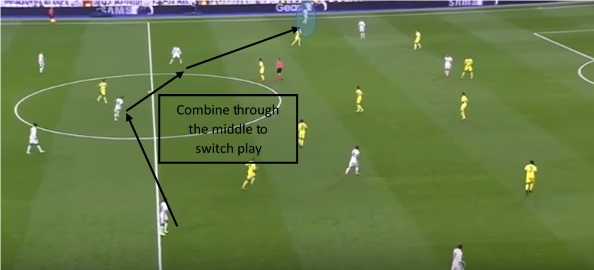
One of the most popular type of movements in this case would be an infield movement from the winger. He would then position himself in a more central areas of the pitch what will open up a channel out wide for the full back to run/pass into. As the opposition wide midfielder/full back applies pressure, a winger should look to provide support and receive the ball between the lines.
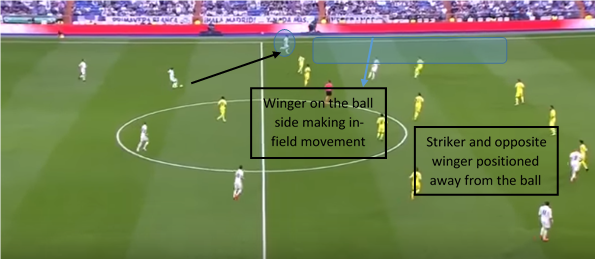
As we can see on the diagram below, winger coming inside opens up spaces for full back upon receiving. This creates a good opportunity for a direct cross as at least two players will be in the box. Winger, however doesn’t have to stay centrally. He might choose to make a run into wide areas and receive the ball from the full back playing into channel.
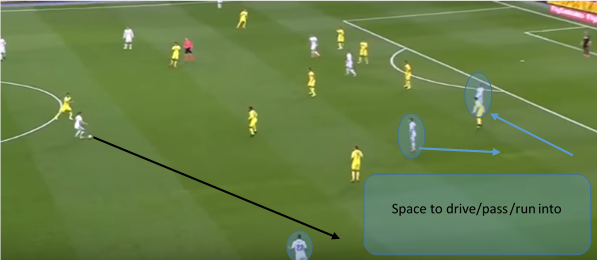
Different type of movement to create space occurs when winger drops deeper into central areas and full back makes an overlapping run to receive wide. This will usually drag the opposition wide midfielder more centrally and open up spaces between the units for the full back to exploit. This kind of combination also allows one of the central midfielders to join up in the attack forwards.
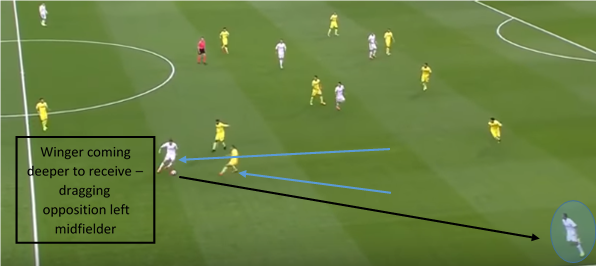
Another situation is when a winger drops even more centrally into the area in and around the penalty box. This encourages full back to try dribbling in a 1v1 situation and get into the space beyond pressurising opposition wide midfielder/full back to then produce a cross as one of the options.
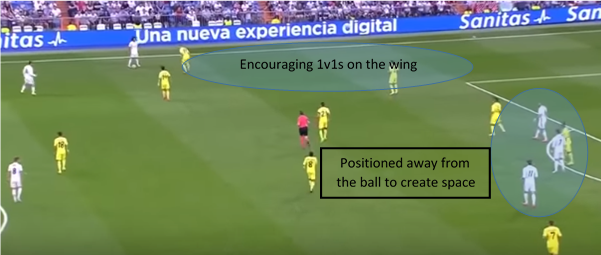
Finally, combining the ball through midfield provides another opportunity to create space in wide areas. As the ball is centrally, the opposition will narrow up. Especially, when the ball is played vertically and combined ‘in and out’, the spaces for full backs will open up. Combination play involving a set to then play wide off one touch might be an effective pattern of play.
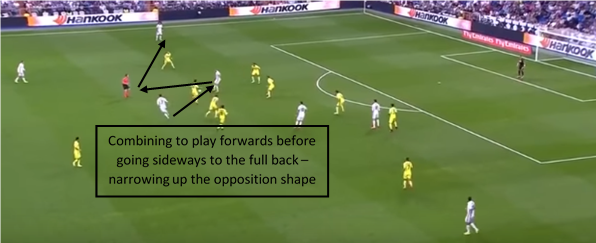
Spaces created for full backs don’t necessarily have to be used by full backs every time. It might be the case that as the space is created by winger, another striker or central midfielder drops into there. Full backs should aim to exploit it at every opportunity but without taking up spaces if another player has already made a movement into it.
By Alex Trukan, Development Coach, Nottingham Forest
@AlexTrukan


